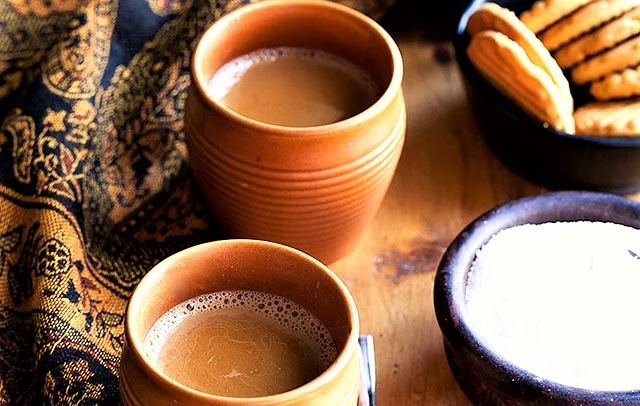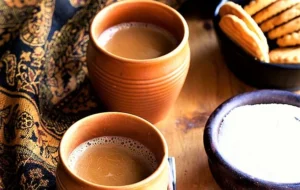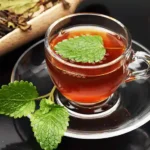Tea and History: A Brew That Shaped Nations – Tea is a beverage manufactured by soaking freshly boiled water in the young leaves and leaf buds of the tea plant, Camellia sinensis. Two major diversities are used, the small-leaved China plant (C. sinensis) and the enormous leaves of Assam plant (C. sinensis variety assamica). Hybrids of these two diversities are also developed. The leaves may be brewed or left unfermented.

Tea holds a precious spot in the cultures of specific countries renowned for their high tea consumption. Let’s get through on a journey to know the history of the tea-loving nations. Also, we will see the unique traditions and cultural importance attached to tea.
History of the tea trade
According to the facts from legend, tea has been famous in China since a time period of 2700 BCE. For millennia it was a medicinal drink achieved by boiling fresh leaves in water. But around the 3rd century CE, it changed to a regular consumption, and tea harvestation and production started. The first published account of the processes of planting, cultivating, and consuming came in 350 CE. Around 800, the first seeds were carried to Japan, where harvestation became developed by the 13th century. Chinese from Amoy carried tea harvesting to the island of Formosa (Taiwan) in 1810. Tea harvesting in Java started under the Dutch. Furthermore, they took seeds from Japan in 1826 and seeds, workers, and implements from China in 1833.
In 1824, tea plants were found in the hills along the partition between Burma and the Indian state of Assam. The British initiated tea culture in India in 1836 and in Ceylon (Sri Lanka) in 1867. At first, they made use of seeds from China. But after a time interval seeds from the Assam plant were utilized.
The Dutch East India Company took the first consignment of China tea to Europe in 1610. In 1669 the English East India Company took Chinese tea from ports in Java to the London market. Later, teas produced on British estates in India and Ceylon arrived at Mincing Lane, the center of the tea trade in London. By the late 19th and early 20th centuries, tea production had extended to Russian Georgia, Sumatra, and Iran. Also, spread to non-Asian countries such as Natal, Malawi, Uganda, Kenya, Tanzania, Congo, and Mozambique in Africa, to Argentina, Peru in South America, Brazil and to Queensland in Australia.
Global Importance of Tea
Egypt: The Profound Connection of Tea
In the artistically rich land of Egypt, tea, regarded as “Shai,” develops heartfelt relationships among its people. Egyptians together drink a surprising 65,000 to 75,000 loads of tea. This daily ritual goes along with every meal and is enjoyed by individuals from all different levels of life. In Egypt, one can get oneself engrossed in a steaming cup of tea at any moment of the day. In addition, allowing for tranquillity and enjoyment without the restriction of a specific hour.
China: The Birthplace of Tea
Our expedition takes us to China, the origin of tea. Moreover, it has a history dating over 5,000 years. Tea acquires a deep-rooted place in Chinese tradition, portraying respect, unity, and purity. Classical tea rituals like Gongfu Cha and Chaoshan symbolize the careful arrangement and appreciation of tea’s nuances. Green, black, oolong, and pu-erh teas are famous varieties, each providing extraordinary flavors and health benefits.
Turkey: A Delightful Tea Experience
Next on our list is Turkey, a country that positions among the top 10 tea-drinking nations. Turkish tea, known as “cay,” has great significance within society and cultural activities. Brewed with the help of a dual teapot method, Turkish tea is presented in tulip-shaped glasses, empowering a bold blend without negotiating on its delightful taste. It is most of the time enjoyed during close and serious discussions, meals, and get-togethers, personifying the spirit of hospitality.
Ireland: Tea as a Solution
Continuing our analysis, we now talk about Ireland, where tea is a fundamental part of everyday life. Moreover, individuals of Ireland drink 4 to 6 cups of tea on a daily basis, and it acquires the power to correct any circumstance. Regardless of the situation, tea has the power to rectify any predicament. Many Irish individuals start their day with a cup of tea and continue to consume it all along the day. Moreover. they end their day with another cup. Classic Irish Breakfast tea remains consistent in Irish culture.
Britain: Honoring Tradition with Afternoon Tea
Our last destination is Britain. It is where tea acquires special importance and is respected through the iconic ritual of afternoon tea. Moreover, it emerged in the 19th century. Afternoon Tea is a relaxing event featuring a range of teas, soft sandwiches, scones, and pastries. The art of adding milk to black tea, is commonly regarded as “builder’s tea,”. Moreover, it is deeply engrossed in British tea-drinking rituals and traditions.
Conclusion on Tea and History: A Brew That Shaped Nations
Tea is acknowledged in different ways all over these tea-loving nations. In addition, it brings convenience, magic, and heartfelt relationships to people around the globe. The cultural customs and rituals related to tea in Egypt, India, China, Turkey, Ireland, and Britain symbolize the different ways in which tea is loved and celebrated. So, come together in the global tapestry of tea culture. Also, engross in your favorite brew, experiencing the rich history of tea that accompanies each sip.
FAQs on Tea and History: A Brew That Shaped Nations
Question1. How important is Tea?
Answer. Tea has its own significance globally. Everyone enjoys tea and looks forward to it as a source of leisure, relaxation, get-together, and building connections.






